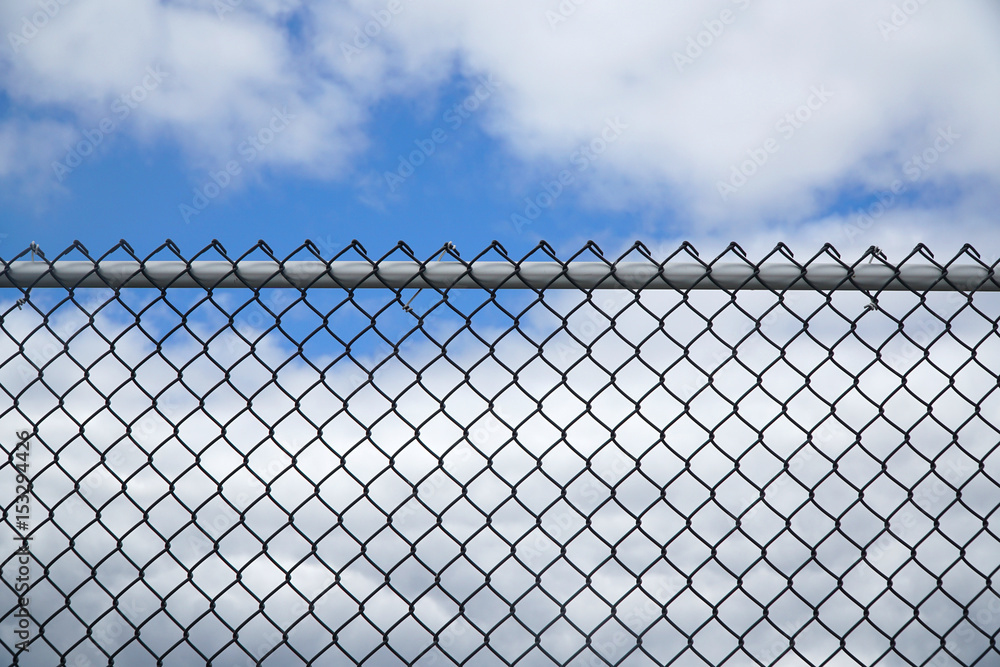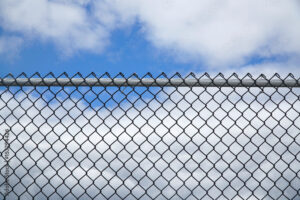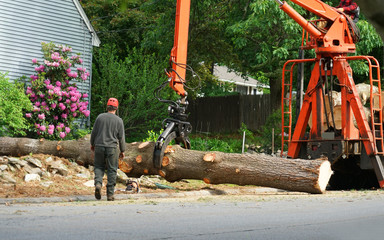Chain Link Fence New Jersey can effectively keep animals and other objects on your property. However, consider other options for your fencing needs. Before working on your chain link fence, contact 811. They will mark buried utility lines. When you finish installing line posts, slide the first length of the top rail onto each terminal post loop cap and fasten it with a carriage bolt. Repeat for the remaining lengths of the top rail on each terminal post.
The strength of a chain link fence depends on a few factors. The first is the gauge, or thickness, of the wire used to create the mesh fabric. The second is the size of the framework, or pipe tubing, used to build it. The framework has three main parts: terminal posts, line posts, and top rails.
The most common type of framework is galvanized steel, a dull gray color. This coating helps protect the metal from the elements, preventing it from rusting. It also provides a strong structure for attaching the wires. However, other options are available, such as polymer or PVC coatings. These coatings provide the same protection as galvanized metal but offer a more visually appealing appearance. They are more expensive than galvanized steel but give the same durability level.
When installing a new chain link fence, it is important to check for underground utilities. Call 811 or your local utility company before digging the posts for the wall. They will send someone to mark the locations of any underground utilities with landscaping spray paint, making it easier to avoid damaging them. Once the posts are set, the installer will stretch a bottom tension wire, or coil wire, between each terminal post to help minimize the in and out movement at the base of the fence between poles. They may also install a top horizontal or top rail to add extra support.
Lastly, the installer will add a chain link fitting, or connector, to each line post to connect the top rails to the terminal posts. These come in various sizes, depending on the application. For residential use, 1-3/8 inch diameter pipes are commonly used. Tennis courts commonly use a smaller mesh, about 1 1/4 inches, as the smaller space prevents tennis balls from getting stuck in the fence.
Over time, connections can become loose, or whole lengths of the fence can pull away from posts. This is why it is important to inspect your wall and make repairs as needed regularly. Keeping vegetation and trees away from your chain link fence is also important. Vines and suckers can lift and displace the links, causing damage and weak spots. Tree roots can also damage or even pull up the terminal and line posts.
The strands of steel weaving together in a chain link fence are sturdy and secure and can be reinforced to add more security. These security measures are not only used to prevent people or animals from getting into restricted areas but can also be used to prevent intruders from scaling the fence itself. Adding security measures to residential and commercial chain link fences will greatly improve their ability to deter unwanted activity on a property.
Most chain link fences are built using galvanized steel, a process that coats the metal to protect it from the elements and prevent rust. However, other metal options are available, such as aluminum or powder-covered. These can add a different look and feel to the fence but offer the same benefits as galvanized steel.
The framework of a chain link fence consists of steel tubing that acts as posts to hold the mesh fabric in place. The tubing is inserted into the ground to create a solid foundation that will prevent the fence from moving in high winds or being pushed by vehicles. The height of a chain link fence can be changed by increasing the number and size of terminal posts that are placed into the ground. It is also possible to add more line posts to reduce the tension put on the top rail of the fence.
If a higher level of security is desired, adding a layer of barbed wire to the top and bottom of a chain link fence is possible. This will make climbing or scaling the wall impossible without serious bodily harm.
A common change is the addition of privacy slats to the bottom of a chain link fence. This adds a layer of privacy, making it more difficult for intruders to crawl under the wall.
Another way to increase the security of a chain link fence is to space the line posts farther apart. This will make it more difficult for someone to cut the wall and drive through the opening, which is usually around 10′ wide.
Chain link fences are one of the most durable fencing on the market. They’re often used for security and safety in public spaces but can also be used to protect homes and businesses. The steel wires in a chain link fence are bent and interlocked into a flexible yet sturdy barrier that can resist impact and other forces. The wall is usually galvanized for additional corrosion resistance, which helps to extend its lifespan.
The strength and durability of a chain link fence depend on the wires’ diameter and the framework’s thickness. The thicker the wires, the stronger the wall. A chain link fence can be made from metal or vinyl. Vinyl fences are more expensive than metal but offer superior durability and aesthetics.
It’s important to install the right amount of tension on the lines to increase the strength and longevity of a chain link fence. This can be done using knuckles, clips, or ty wire. A knuckle is opened every 300mm so the link can be hung on the line wire and then closed up once the line wire has been strained. These intermediate posts should be concreted to ensure they are not displaced during construction.
The top rail is installed once the frame and line posts are set. It is sold in 21-foot lengths and rests on the terminal pillars. The end of the top rail is attached to the terminal post using a fitting called a rail end band or a carriage bolt with its head on the outside of the fence. The rail end bands should be positioned at a comfortable height to walk on.
Once the top rail is in place, installers stretch a bottom tension wire – also known as coil wire – between the terminal posts to help minimize the in and out movement at the base of the fence. They may also add intermediate horizontal rails between terminal posts for added stability. If the wall will have gates, the installer may also install a bottom rail or a top horizontal rail to provide extra strength and support for the gate.
A chain link fence is an effective security measure, but it can also be a visually appealing addition to your property. Various factors impact its aesthetics, including the gauge of wire and the mesh size. The choice of color, style of fence material, and the use of stylish caps on line posts can also make it more appealing. The height of your fence can also affect its appearance. Higher barriers may look more imposing and uninviting than shorter fences.
Many homeowners don’t like the dull silver color of their run-of-the-mill chain link fence, and manufacturers offer colors to address this concern. Hunter green, black, and chocolate brown are common options. Some owners even choose to paint their fences to match the surrounding landscape. If you decide to change the color of your fence, get approval from your homeowners association before beginning the project.
When installing a new chain link fence, the first step is to mark the locations of the corner, end, and gate posts with stakes. Next, measure the distance between these posts to determine how long a piece of fence fabric you need. Using this information, you can order the correct length of chain link fencing from the manufacturer.
Once you have the chain link fence fabric in place, the next step is to ‘weave’ it together by spinning the ends to separate them from adjacent weaves. It is easiest to stand the chain link fence upright instead of lying it on the ground. After weaving, you need to ‘hook up’ the tension tools, similar to come-along hooks, by sliding one of them into the brace bands on each terminal post and attaching the other end of the device to it on the inside.
If you’re concerned about animal damage to your chain link fence, consider adding a bottom wire to prevent animals from pushing under the bar. This is commonly used in residential applications to keep pets and children from wandering off the property. It can also be added to commercial and industrial chain link fences in areas where chemicals are used, such as roadways with slat spray in the winter.


